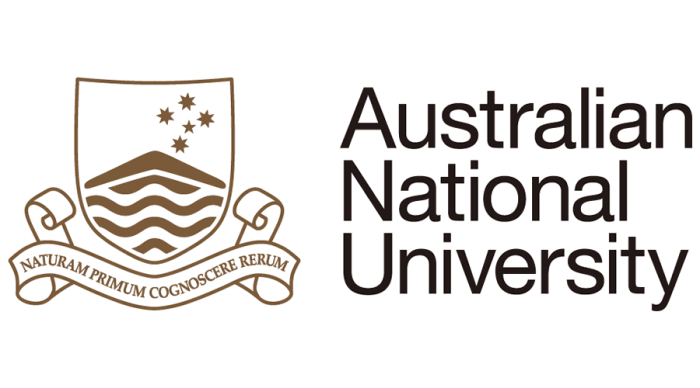In the realm of higher education, university transcriptions emerge as a transformative force, bridging the gap between traditional learning and the demands of a rapidly evolving educational landscape. These meticulously crafted records of spoken words unlock a treasure trove of knowledge, empowering students with disabilities, enhancing comprehension, and facilitating remote learning. Join us as we delve into the captivating world of university transcriptions, exploring their profound impact on the academic journey.
From lecture halls to research labs, university transcriptions serve as invaluable tools, providing equitable access to educational content, fostering deeper engagement, and supporting groundbreaking research. Prepare to be enlightened as we uncover the intricate process of transcription, the ethical considerations that guide it, and the myriad applications that make university transcriptions an indispensable asset in the modern academic arena.
Overview of University Transcriptions

University transcriptions are verbatim records of spoken words, typically lectures, seminars, or interviews, that are converted into written text. They serve as valuable resources for students, researchers, and other stakeholders in higher education.
Transcriptions play a crucial role in facilitating learning, preserving knowledge, and enabling accessibility. They provide students with a written record of lectures, allowing them to review and reinforce key concepts, identify areas for further study, and prepare for exams.
Types of University Transcriptions
There are various types of university transcriptions, each serving a specific purpose:
- Lecture Transcriptions: These capture the spoken content of lectures, including the professor’s explanations, examples, and discussions.
- Seminar Transcriptions: These record the interactive discussions and debates that take place in seminars, providing insights into different perspectives and critical thinking.
- Interview Transcriptions: These document interviews conducted for research purposes, providing valuable data for analysis and interpretation.
Benefits of University Transcriptions

University transcriptions offer numerous advantages that enhance the educational experience for students and educators alike.
These benefits include improved accessibility, enhanced engagement, facilitated remote learning, and support for research and analysis.
Enhance accessibility for students with disabilities or language barriers
Transcripts provide a written record of lectures, making them accessible to students with hearing impairments or language barriers. This ensures that all students have an equal opportunity to participate in class and succeed in their studies.
Improve student engagement and comprehension
By providing students with a written reference, transcripts allow them to review material at their own pace and reinforce their understanding of the content. This leads to improved engagement and comprehension, as students can focus on the material without the pressure of note-taking.
Facilitate remote learning and review
Transcripts are essential for remote learning, as they provide students with access to course material regardless of their location. Additionally, transcripts can be used for review purposes, allowing students to revisit key concepts and prepare for exams.
Support research and analysis
Transcripts can be used by researchers and analysts to study teaching methods, student comprehension, and other aspects of the educational process. This information can be used to improve the quality of instruction and ensure that students are receiving the best possible education.
Process of Creating University Transcriptions

Creating university transcriptions involves a multi-step process that combines technology and human expertise.
Initially, the audio or video recording is uploaded to a transcription platform. Speech recognition software then generates a draft transcript based on the audio input.
Use of Technology and Human Transcriptionists
While technology plays a significant role in transcription, human transcriptionists remain essential for accuracy and quality control. They review and edit the draft transcript, ensuring it accurately reflects the speaker’s words.
Challenges and Best Practices in Transcription
Transcription presents several challenges, including background noise, accents, and technical jargon. To mitigate these, best practices include using high-quality recordings, providing clear instructions to speakers, and employing experienced transcriptionists.
Applications of University Transcriptions
University transcriptions are not just limited to accessibility purposes. They offer a wide range of applications that can enhance academic pursuits and knowledge dissemination.
Use in Research Projects
Transcriptions provide a valuable resource for researchers. They enable researchers to:
- Analyze spoken data from interviews, focus groups, and other qualitative research methods.
- Identify patterns, themes, and insights that may not be apparent from written transcripts or recordings.
- Create accurate and detailed records of research data for future reference and analysis.
Ethical Considerations in University Transcriptions
University transcriptions involve sensitive information and intellectual property, necessitating ethical considerations to protect confidentiality, privacy, accuracy, and copyright.
Confidentiality and Privacy
- Transcribers must maintain the confidentiality of personal and sensitive information contained in recordings.
- Unauthorized access or disclosure of such information can violate privacy laws and ethical standards.
- Transcriptions should be stored securely and accessed only by authorized individuals.
Accuracy and Completeness
- Transcribers have a responsibility to ensure the accuracy and completeness of their work.
- Errors or omissions can misrepresent the content of the original recording, leading to misunderstandings or incorrect interpretations.
- Transcribers should follow established guidelines and protocols to minimize errors and maintain the integrity of the transcripts.
Intellectual Property and Copyright
- University transcripts may contain copyrighted material, such as lectures, presentations, and research findings.
- Transcribers must respect intellectual property rights and obtain necessary permissions before distributing or publishing transcripts.
- Unauthorized distribution or use of copyrighted material can result in legal consequences.
Question & Answer Hub
What exactly are university transcriptions?
University transcriptions are written records of spoken words, typically lectures, seminars, or interviews, that occur in a university setting.
How do university transcriptions benefit students?
University transcriptions provide numerous benefits to students, including enhanced accessibility for those with disabilities or language barriers, improved engagement and comprehension, and support for remote learning and review.
What are the ethical considerations involved in university transcriptions?
University transcriptions involve ethical considerations such as confidentiality, privacy, accuracy, completeness, and intellectual property rights.




